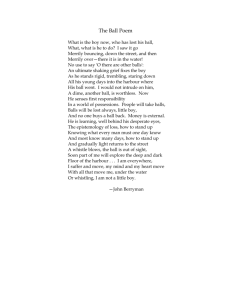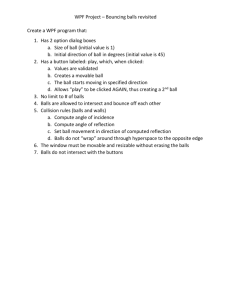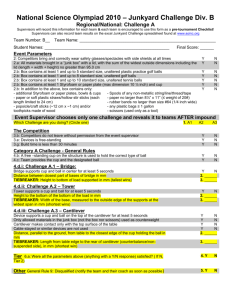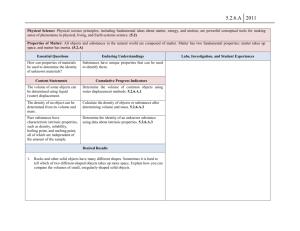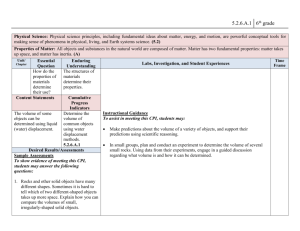If You Are So Inclined
advertisement
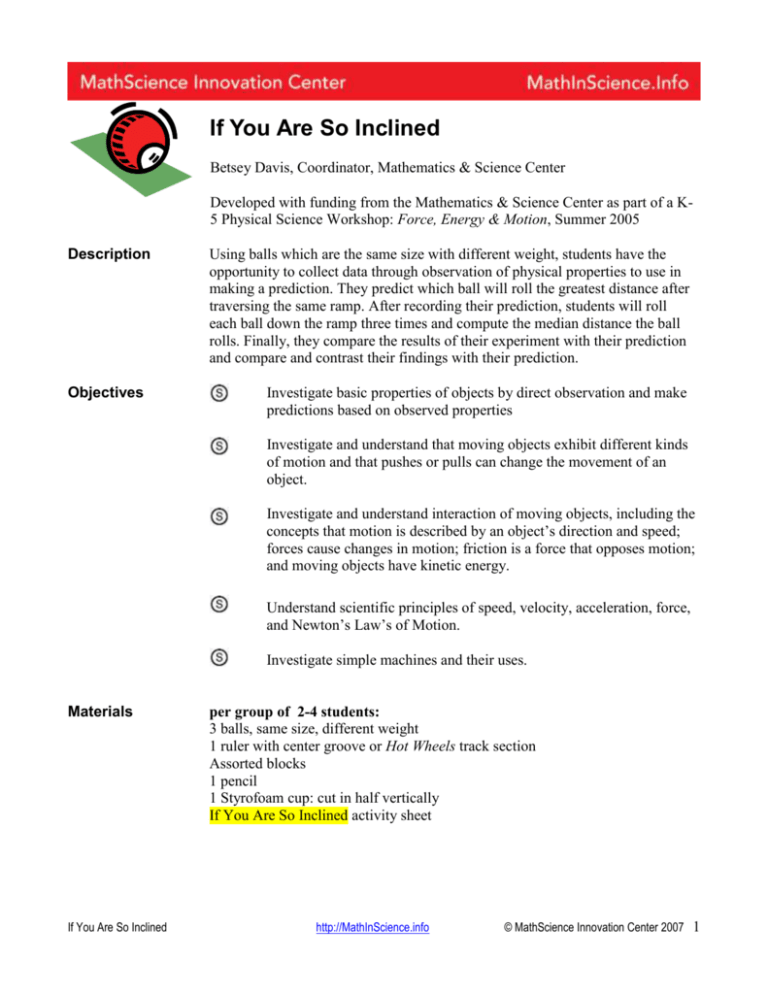
If You Are So Inclined Betsey Davis, Coordinator, Mathematics & Science Center Developed with funding from the Mathematics & Science Center as part of a K5 Physical Science Workshop: Force, Energy & Motion, Summer 2005 Description Objectives Using balls which are the same size with different weight, students have the opportunity to collect data through observation of physical properties to use in making a prediction. They predict which ball will roll the greatest distance after traversing the same ramp. After recording their prediction, students will roll each ball down the ramp three times and compute the median distance the ball rolls. Finally, they compare the results of their experiment with their prediction and compare and contrast their findings with their prediction. Investigate basic properties of objects by direct observation and make predictions based on observed properties Investigate and understand that moving objects exhibit different kinds of motion and that pushes or pulls can change the movement of an object. Investigate and understand interaction of moving objects, including the concepts that motion is described by an object’s direction and speed; forces cause changes in motion; friction is a force that opposes motion; and moving objects have kinetic energy. Understand scientific principles of speed, velocity, acceleration, force, and Newton’s Law’s of Motion. Investigate simple machines and their uses. Materials If You Are So Inclined per group of 2-4 students: 3 balls, same size, different weight 1 ruler with center groove or Hot Wheels track section Assorted blocks 1 pencil 1 Styrofoam cup: cut in half vertically If You Are So Inclined activity sheet http://MathInScience.info © MathScience Innovation Center 2007 1 Directions Use assorted blocks to prop up the ruler or track to create a ramp. Experiment to see how the far a ball rolls after traversing the ramp. Be sure there is enough space to allow the ball to come to a complete stop. The purpose of the Styrofoam cup is to slow the ball down or decelerate the ball so that less space is required for the ball to stop. Be sure each ball is close enough in size to the others to enter the cup in the same way, with no additional friction or drag. Adjust the size of the cup or the cut of the cup as needed. Explain to students that Galileo studied the affect of gravity on objects using these same tools: balls and ramps. Consider a class discussion of predictions before rolling the balls down the ramps. Groups may learn from each other by listening to the reasons given for each prediction. Have another class discussion following the data collection and consider collecting class data for group analysis. Consider a graphical representation of the data. The distance the balls roll should be measured beginning at the end of the ramp. Science Information When a ball is placed at the top of a ramp, it is given potential energy. This is gravitational potential energy. Anything moved up above the earth’s surface has the potential to fall. The energy comes from the attractive force of earth. Potential energy is computed by multiplying vertical distance by weight. The higher the ball is placed, the more potential energy is stored by the ball. Since all three balls in this experiment are placed at the same height, they will store potential energy in different amounts by their weights. As the balls roll down the ramp, they trade their potential energy for kinetic energy or energy of motion. Based on this information alone, the heavier ball should roll the greatest distance. However, just like in the real world, there are other factors involved besides potential energy. Depending on the size and nature of the balls used, there can be differences in friction forces which oppose motion or wind resistance, opposing motion, and results may vary. Virginia Standards of Learning Science K.1, 1.1, 1.2, 2.1, 3.1, 3.2, 4.1, 4.2, 5.1, PS.6, PS.10 Teaching Tips For a quick background refresher of science concepts, view the PowerPoint presentations: Distance, Time, and Speed Speed and Acceleration Newton’s Laws Energy: Potential and Kinetic Hot Wheels track sections cost about $1 each and are available for purchase singly at toy stores such as Toys R Us. The track sections have side rails to help the balls stay on the ramp. Waffle balls, table tennis balls, hard rubber balls, and golf balls may be sources of the same size yet different weight balls needed for this experiment. If You Are So Inclined http://MathInScience.info © MathScience Innovation Center 2007 2 If You Are So Inclined Objective: To experiment with mass, force, and changes in motion. Materials per group (2-4 students): 3 balls, same size, different weight 1 ruler with center groove or Hot Wheels track section 1 pencil Assorted blocks 1 Styrofoam cup : cut in half vertically as shown (see page 7-8 Stop Faking It: Energy) Steps: 1. Using your senses, determine of what material each ball is made. Also using your senses, rank the ball masses as light, medium and heavy when compared to each other. Record your findings below: Mass BALL 1 BALL 2 BALL 3 Material: Light Medium Heavy 2. Now imagine each ball rolling down the same ramp individually and hitting the cup. Think about which ball would push the cup the most distance across the floor and talk it over with your partners. Using one complete sentence, make a prediction about how far each ball will push the cup compared to the others. Record your prediction below: __________________________________________________________________________ __________________________________________________________________________ __________________________________________________________________________ 3. On the floor and using blocks for support, build a ramp using a ruler with a center groove or Hot Wheels track section. This will be our inclined plane used by Galileo. 4. Use a pencil to keep BALL 1 at the top of the ramp. Release the ball from the top of the ramp by raising the pencil straight up. Measure the distance the cup travels from the end of the ramp until where it stops. Record the measurement in the table below. If You Are So Inclined http://MathInScience.info © MathScience Innovation Center 2007 3 5. Repeat the experiment two more times with the same ball, making sure you release the ball from the same place at the top of the ramp in the same way and record the measurement in the table. Trial 1 Distance BALL1 Distance BALL 2 Distance BALL 3 2 3 MEDIAN 6. Repeat the experiment three times with BALL 2 and record in the table. 7. Repeat the experiment three more times with BALL 3 and record in the table. 8. Find the median distance the cup traveled for each ball and record in the table. 9. Conclusions: What do you know now about the distance the cup traveled? ________________________________________________________________________ ________________________________________________________________________ How do your findings match your predictions? Why or why not? _______________________________________________________________________ _______________________________________________________________________ If You Are So Inclined http://MathInScience.info © MathScience Innovation Center 2007 4


